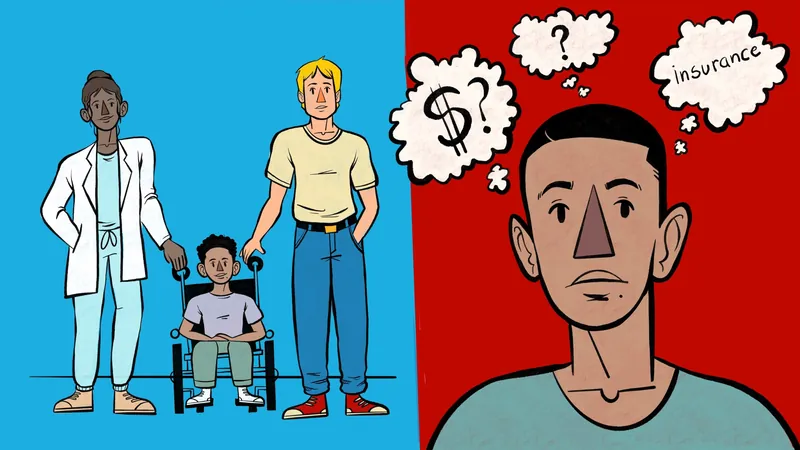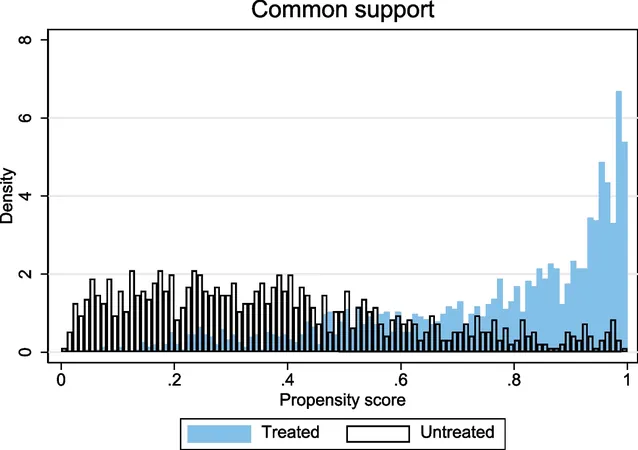
Rethinking Cerebral Palsy: How a New Definition Could Transform Adult Care
2024-11-19
Author: Sarah
Rethinking Cerebral Palsy: How a New Definition Could Transform Adult Care
Researchers are advocating for a significant shift in how cerebral palsy (CP) is classified and treated, emphasizing its lifelong implications. Surprisingly, in the United States, the adult population living with cerebral palsy now surpasses that of children. Yet, the Centers for Disease Control and Prevention (CDC) continues to label cerebral palsy as 'the most common motor disability in childhood,' a perspective that neglects the ongoing needs of adults grappling with this condition.
Mark Peterson, Ph.D., a leading researcher from the University of Michigan Health, argues that this pediatric-focused mindset has serious repercussions for adult patients. Peterson has been instrumental in pushing for a revised definition that acknowledges cerebral palsy as a 'lifelong physical disability,' ensuring that care extends seamlessly into adulthood.
The Unmet Needs of Adult Patients
Transitioning from pediatric to adult care can often feel like 'falling off a cliff' for those with cerebral palsy. Many adults report feeling abandoned as they experience significant discrepancies in medical care when they age out of pediatric services. While children with cerebral palsy typically receive comprehensive care, adults often encounter a lack of understanding and support for their evolving health issues.
Peterson highlights that this gap in care leads to low confidence among adults with cerebral palsy, as many struggle to have their concerns addressed or to receive the necessary therapies they were used to during childhood. Unfortunately, common risks associated with aging, such as osteoporosis and mental health issues, are often overlooked, further jeopardizing their health outcomes.
A New Era for Research and Policy
The push to redefine cerebral palsy comes from several organizations, including the Cerebral Palsy Foundation. By establishing a more inclusive definition, experts aim to drive better research initiatives that focus on the adult population. Peterson notes that including adults in clinical research will enhance our understanding of how cerebral palsy affects individuals over their lifespans, potentially preventing accelerated aging and other secondary health conditions.
A more nuanced understanding of cerebral palsy not only benefits individual care but also has broader implications for public health policy and resource allocation. For instance, a clearer operational definition could lead to improved data on health threats affecting the cerebral palsy population, resulting in better-targeted healthcare services and funding initiatives.
Time for Change
Despite a reported 15% increase in cerebral palsy-related funding since 2017, there is a glaring insufficiency in resources aimed at life-course-based initiatives. Peterson emphasizes the urgent need for healthcare policies that evolve alongside patients. 'For too long, the focus has been on ensuring that children with cerebral palsy transition into healthy adulthood. Now, it's crucial that we prioritize ongoing support and effective treatment for adults who were once pediatric patients,' he asserts.
As the demographic of adults with cerebral palsy continues to grow, so does the responsibility of healthcare systems to adapt. By embracing a new definition and framework for understanding this condition, we might pose a critical question: Are we truly prepared to care for the lifelong needs of those living with cerebral palsy? The answer could shape the future of care for generations to come.





 Brasil (PT)
Brasil (PT)
 Canada (EN)
Canada (EN)
 Chile (ES)
Chile (ES)
 España (ES)
España (ES)
 France (FR)
France (FR)
 Hong Kong (EN)
Hong Kong (EN)
 Italia (IT)
Italia (IT)
 日本 (JA)
日本 (JA)
 Magyarország (HU)
Magyarország (HU)
 Norge (NO)
Norge (NO)
 Polska (PL)
Polska (PL)
 Schweiz (DE)
Schweiz (DE)
 Singapore (EN)
Singapore (EN)
 Sverige (SV)
Sverige (SV)
 Suomi (FI)
Suomi (FI)
 Türkiye (TR)
Türkiye (TR)